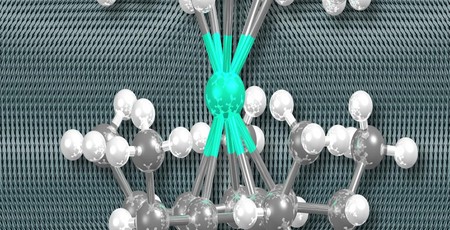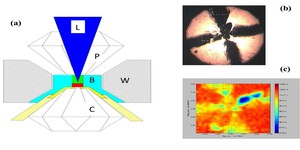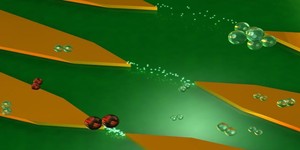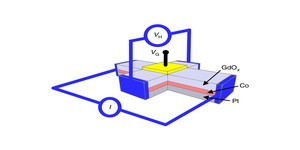Researchers claim 'molecular memory' breakthrough
October 19, 2018 | 11:11
Companies: #sun-yat-sen-university #university-of-jyvaskyla #university-of-sussex

Researchers from the Universities of Sussex, UK, Jyväskylä, Finland, and Sun Yat-sen University, China, have created a single-molecule magnet which retains its properties in 'high-temperature' conditions - herein loosely defined as being around -196°C, comfortably above the temperature of liquid helium - with the potential to boost the storage capacity of future magnetic media.
Single-molecule magnets are clever creations, capable of remembering the direction of an applied magnetic field long after the field has been disabled. Taking up as little room as possible, single-molecule magnets would have serious potential as a means of significantly boosting the areal density - and thus storage capacity - of magnetic storage media like mechanical hard drives, if it weren't for one small wrinkle: They have a tendency to cease to operate when warmed more than a couple of degrees above absolute zero, -273.15°C.
Researchers at the Universities of Sussex, UK, Jyväskylä, Finland, and Sun Yat-sen University, China, claim to have made a breakthrough in this regard, though one which handily demonstrates the difference in meaning of the term 'high-temperature' when applied across various scientific disciplines: The synthesis and characterisation of a single-molecule magnet which operates above the temperature of liquid helium, at a considerably balmier -196°C, and can thus be studied using far cheaper liquid nitrogen.
'When considering our everyday life, liquid nitrogen is extremely cold. However, compared to liquid helium, which has so far been required to study single-molecule magnets, the liquid nitrogen temperature is a huge leap upwards,' explains postdoctoral researcher Akseli Mansikkamäki of his team's work, in defence of the categorisation of the resulting single-molecule magnets as 'high-temperature.' 'Liquid nitrogen is more than 300 times cheaper than liquid helium and much more readily available, enabling technological applications. Therefore, the research constitutes an important scientific milestone.'
The team's work isn't exactly ready for commercialisation just yet, of course, with few likely to be willing to constantly pour liquid nitrogen into their next hard drive nor to mop up the resulting condensation. It has, however, provided insights into how single-molecule magnets can be warmed without losing their properties - and holds the potential, perhaps, of one day reaching the above-freezing operating temperature that would be required to send hard drive capacities skyrocketing.
The team's research has been published in the journal Science.

MSI MPG Velox 100R Chassis Review
October 14 2021 | 15:04








Want to comment? Please log in.